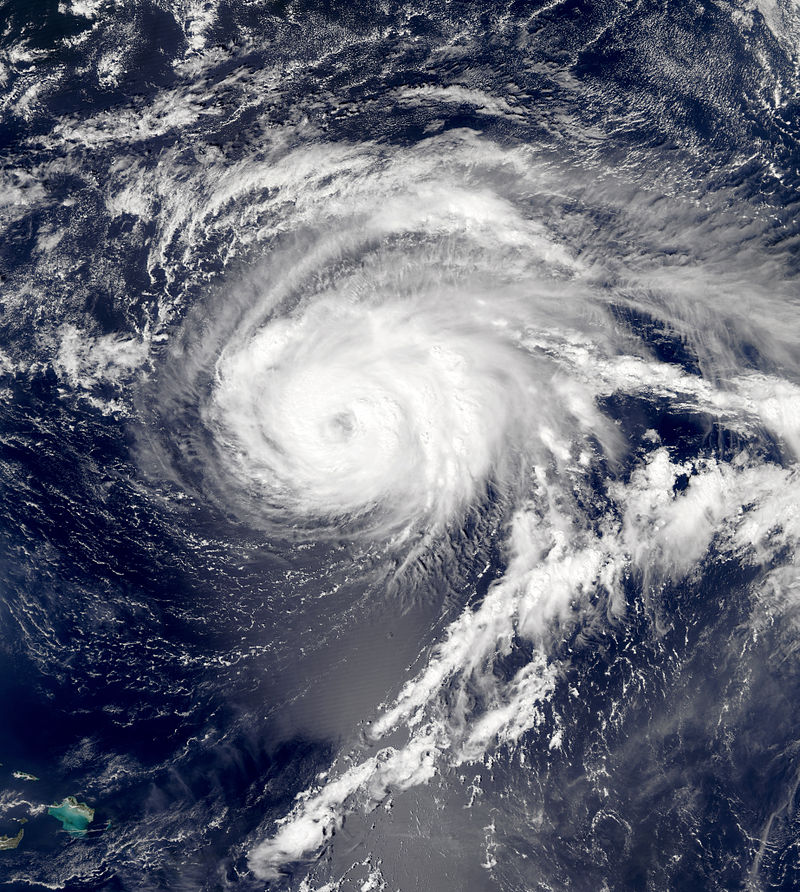Hurricane Nate, the fourteenth named storm and seventh hurricane of the 2005 Atlantic hurricane season, presented a potential danger to the island of Bermuda during early September. This research article examines the trajectory and impacts of Hurricane Nate, which ultimately remained at sea, passing well to the south of Bermuda as a Category 1 hurricane. The storm’s movement, effects, and subsequent interactions with other weather systems are analyzed. Additionally, recommendations for preparedness in the face of a similar hurricane threat are provided.
Introduction: On September 5, 2005, Hurricane Nate formed southwest of Bermuda, sparking concerns about its potential impact on the island. Early forecasts indicated the possibility of a direct hit, prompting preparations and warnings. However, as the storm progressed, it moved slowly to the northeast, maintaining its distance from Bermuda. This article aims to delve into the details of Hurricane Nate’s course, assess its effects on various regions, and offer suggestions for future hurricane preparedness.
Trajectory and Impact: Hurricane Nate initially posed a threat to Bermuda, with residents bracing for potential landfall. However, the storm passed approximately 200 miles to the south of the island on September 8 as a Category 1 hurricane. While Bermuda experienced gusty winds and light rainfall, no structural damage occurred. However, the storm did generate rip currents that tragically claimed the life of one individual off the coast of New Jersey.
As Hurricane Nate moved away from Bermuda, it encountered cooler sea surface temperatures and unfavorable wind shear, causing its intensity to diminish. By September 10, the storm had weakened to a tropical storm and eventually transformed into an extratropical system. This extratropical remnant merged with a larger weather system, concluding the life cycle of Hurricane Nate.
Interactions and Secondary Impacts: The remnants of hurricanes Nate and Maria interacted and contributed to heavy rainfall in certain regions. Scotland experienced significant rainfall, leading to localized flooding, while Western Norway encountered a devastating mudslide that resulted in one fatality. Furthermore, the presence of Hurricane Nate, along with Hurricane Ophelia, caused delays for Canadian Navy ships en route to the US Gulf Coast, impeding the timely delivery of relief supplies to assist in the aftermath of Hurricane Katrina.
Recommendations for Preparedness: To ensure adequate preparedness for future hurricanes similar to Nate, it is essential to stay informed through official weather channels, such as national meteorological agencies and local emergency management authorities. Developing and reviewing personal emergency plans, including evacuation routes and communication strategies, is crucial. Additionally, securing homes, trimming trees, and removing potential projectiles from outdoor spaces can help mitigate potential damage caused by strong winds. Lastly, maintaining an emergency kit stocked with essential supplies, such as food, water, medications, batteries, and a first aid kit, is essential.
Interesting Fact: As a direct result of Hurricane Nate, the interaction between its remnants and Hurricane Maria contributed to heavy rainfall and subsequent mudslides in Western Norway. This event underscores the interconnectedness of weather systems and highlights the importance of understanding the potential cascading effects of multiple storms.
Conclusion: Hurricane Nate’s threat to Bermuda during the 2005 hurricane season was ultimately averted, as the storm passed south of the island. Although Bermuda experienced minimal damage, rip currents caused a tragic fatality off the New Jersey coast. The remnants of Hurricane Nate also indirectly impacted Scotland and Western Norway, leading to localized flooding and a fatal mudslide. By studying past events like Hurricane Nate, we can enhance our understanding of hurricane behavior, improve preparedness measures, and minimize the potential impacts of future storms.
Note: No specific information is available regarding the cost of cleaning and rebuilding as Hurricane Nate did not directly impact any populated areas.




Leave a Reply